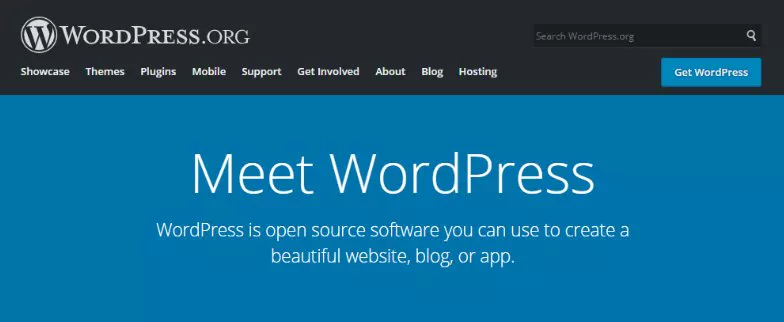WordPress Beginner’s Guide
WordPress is a popular content management system (CMS) used to create and manage websites. It’s a free and open-source platform that has been around since 2003, and currently powers over 40% of all websites on the internet. In this beginner’s guide, we’ll introduce you to WordPress and explain its features, advantages, and installation methods.

What is WordPress?
WordPress Beginner’s Guide: WordPress is a CMS that allows you to create and manage websites without needing to know how to code. It’s built on PHP and uses a MySQL or MariaDB database to store website content. With WordPress, you can create different types of websites, including blogs, business sites, e-commerce sites, and more.
WordPress is known for its user-friendly interface that makes it easy to use even for beginners. It also offers a range of customizable themes and plugins that you can use to add features and functionality to your website.
Understanding WordPress Versions and Updates
Pros and Cons of Using WordPress
WordPress Features
WordPress Beginner’s Guide: WordPress has many features that make it a popular choice for website creation and management, including:
- Easy to use interface: WordPress has an intuitive interface that makes it easy to add and edit content, manage your site’s design, and more.
- Customizable themes and plugins: WordPress offers a wide range of themes and plugins that you can use to customize your website’s design and functionality. Themes control your site’s appearance, while plugins add new features.
- Mobile responsive design: Many WordPress themes are designed to be responsive, meaning that they will adapt to different screen sizes and devices.
- SEO friendly: WordPress is built with SEO in mind, and there are many plugins available that can help you optimize your site for search engines.
- Multilingual support: WordPress supports multiple languages, making it easy to create multilingual websites.
Advantages of WordPress
WordPress has many advantages over other website creation platforms, including: WordPress Beginner’s Guide
- Easy to learn and use: As mentioned, WordPress has a user-friendly interface that makes it easy to use, even for beginners.
- Flexible and customizable: With thousands of themes and plugins available, you can customize your site to look and function exactly the way you want.
- Large user and developer community: WordPress has a large community of users and developers who contribute to its development, offer support, and create plugins and themes.
- Regular updates and security patches: WordPress is regularly updated to improve its performance and security, ensuring that your site remains safe and secure.
- Integrations with other platforms and services: WordPress can be integrated with a wide range of third-party platforms and services, including social media, e-commerce, analytics, and more.
WordPress Installation Methods
There are several ways to install WordPress, including:
- Using a web hosting provider’s one-click install: Many web hosting providers offer a one-click install option for WordPress, which makes the process very easy.
- Manually installing WordPress on a web server: If you prefer to have more control over the installation process, you can manually install WordPress on a web server.
- Installing WordPress on a local machine for development purposes: If you want to develop your website locally before publishing it to the web, you can install WordPress on your own computer using software like XAMPP or MAMP.
Getting Started with WordPress
To get started with WordPress, you’ll need to follow these basic steps: WordPress Beginner’s Guide
- Choose a web hosting provider and domain name: Before you can install WordPress, you’ll need to choose a web hosting provider and a domain name for your website.
- Install WordPress: Once you have a web hosting provider and domain name, you can install WordPress using one of the methods mentioned above.
- . Customize your website: Once WordPress is installed, you can start customizing your website. This includes choosing a theme, installing plugins, and creating pages and posts.
- 4. Add content: With WordPress, you can easily add and edit content on your website, including text, images, and videos.
- Optimize your website for search engines: WordPress has built-in SEO features, but you can also use plugins like Yoast SEO to further optimize your site for search engines.
- Promote your website: Once your website is up and running, you’ll want to promote it to attract visitors. This can include sharing your content on social media, running ads, and building backlinks to your site.’
Conclusion
WordPress Beginner’s Guide : WordPress is a powerful and flexible platform that can be used to create a wide range of websites. With its user-friendly interface, customizable themes and plugins, and built-in SEO features, it’s a great choice for beginners looking to create their own website. By following the steps outlined in this guide, you can get started with WordPress and create a website that meets your needs.